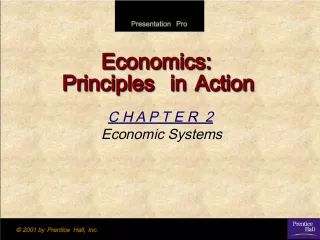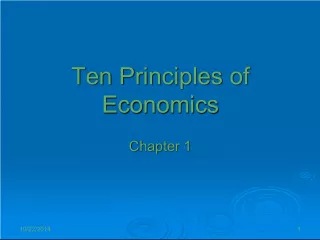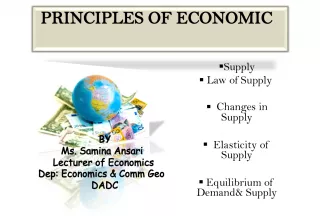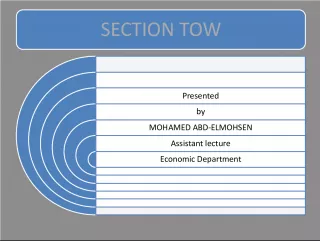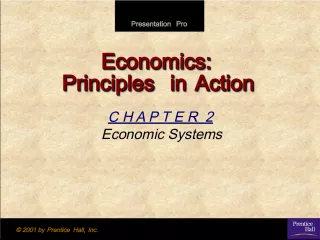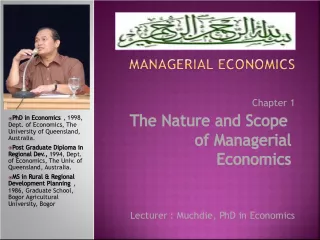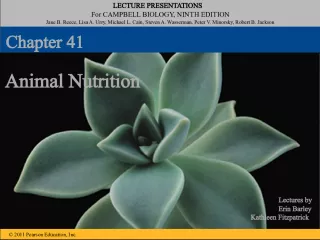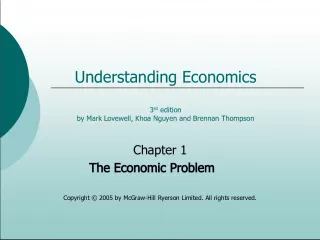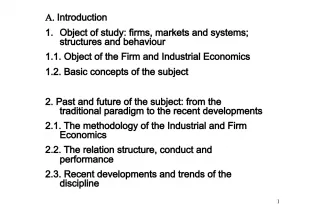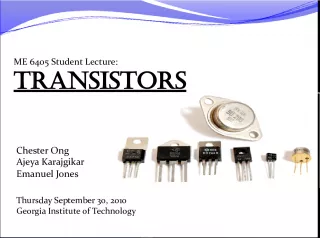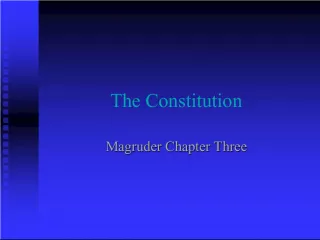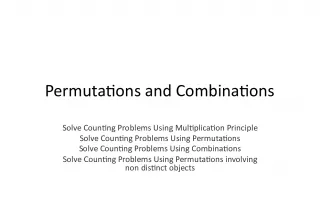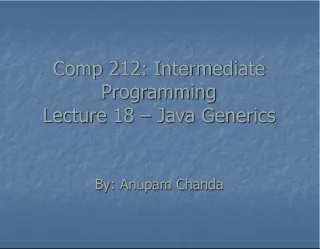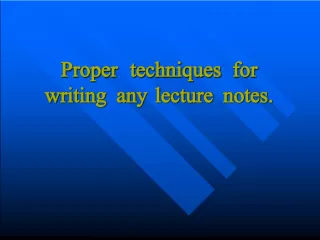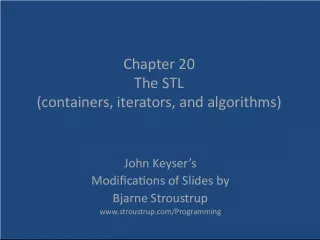Principles of Economics Lecture Presentation
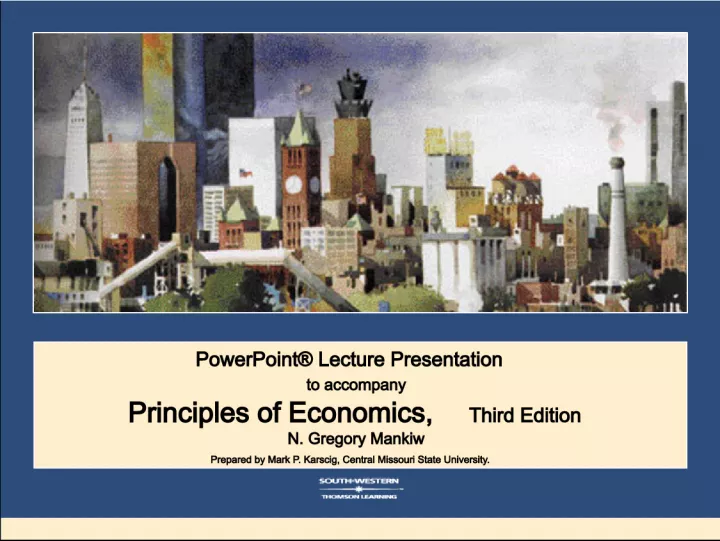

A PowerPoint lecture presentation created by Mark P. Karscig from Central Missouri State University to accompany the third edition of N. Gregory Mankiw's Principles of Economics textbook. It covers the ten principles of economics and provides an introduction to the economy itself, tracing the origins of the word economy back to a Greek term meaning "one who manages a household." ©2004 South Western Thomson Learning.
- Uploaded on | 2 Views
-
 chloemeyer
chloemeyer
About Principles of Economics Lecture Presentation
PowerPoint presentation about 'Principles of Economics Lecture Presentation'. This presentation describes the topic on A PowerPoint lecture presentation created by Mark P. Karscig from Central Missouri State University to accompany the third edition of N. Gregory Mankiw's Principles of Economics textbook. It covers the ten principles of economics and provides an introduction to the economy itself, tracing the origins of the word economy back to a Greek term meaning "one who manages a household." ©2004 South Western Thomson Learning.. The key topics included in this slideshow are . Download this presentation absolutely free.
Presentation Transcript
1. PowerPoint Lecture Presentation to accompany Principles of Economics, Third Edition N. Gregory Mankiw Prepared by Mark P. Karscig, Central Missouri State University.
2. 1 INTRODUCTION
3. Copyright 2004 South-Western/Thomson Learning 1 1 Ten Principles of Economics
4. Copyright 2004 South-Western/Thomson Learning Economy. . . . . . The word economy comes from a Greek word for one who manages a household.
5. Copyright 2004 South-Western/Thomson Learning TEN PRINCIPLES OF ECONOMICS A household and an economy face many decisions: Who will work? What goods and how many of them should be produced? What resources should be used in production? At what price should the goods be sold?
6. Copyright 2004 South-Western/Thomson Learning TEN PRINCIPLES OF ECONOMICS Society and Scarce Resources: The management of societys resources is important because resources are scarce. Scarcity . . . means that society has limited resources and therefore cannot produce all the goods and services people wish to have.
7. Copyright 2004 South-Western/Thomson Learning TEN PRINCIPLES OF ECONOMICS Economics is the study of how society manages its scarce resources.
8. Copyright 2004 South-Western/Thomson Learning TEN PRINCIPLES OF ECONOMICS How people make decisions. People face tradeoffs. The cost of something is what you give up to get it. Rational people think at the margin. People respond to incentives.
9. Copyright 2004 South-Western/Thomson Learning TEN PRINCIPLES OF ECONOMICS How people interact with each other. Trade can make everyone better off. Markets are usually a good way to organize economic activity. Governments can sometimes improve economic outcomes.
10. Copyright 2004 South-Western/Thomson Learning TEN PRINCIPLES OF ECONOMICS The forces and trends that affect how the economy as a whole works. The standard of living depends on a countrys production. Prices rise when the government prints too much money. Society faces a short-run tradeoff between inflation and unemployment.
11. Copyright 2004 South-Western/Thomson Learning Principle #1: People Face Tradeoffs. There is no such thing as a free lunch!
12. Copyright 2004 South-Western/Thomson Learning Making decisions requires trading off one goal against another. Principle #1: People Face Tradeoffs. To get one thing, we usually have to give up another thing. Guns v. butter Food v. clothing Leisure time v. work Efficiency v. equity
13. Copyright 2004 South-Western/Thomson Learning Principle #1: People Face Tradeoffs Efficiency v. Equity Efficiency means society gets the most that it can from its scarce resources. Equity means the benefits of those resources are distributed fairly among the members of society.
14. Copyright 2004 South-Western/Thomson Learning Principle #2: The Cost of Something Is What You Give Up to Get It. Decisions require comparing costs and benefits of alternatives. Whether to go to college or to work? Whether to study or go out on a date? Whether to go to class or sleep in? The opportunity cost of an item is what you give up to obtain that item.
15. Copyright 2004 South-Western/Thomson Learning Principle #2: The Cost of Something Is What You Give Up to Get It. LA Laker basketball star Kobe Bryant chose to skip college and go straight from high school to the pros where he has earned millions of dollars.
16. Copyright 2004 South-Western/Thomson Learning People make decisions by comparing costs and benefits at the margin. Principle #3: Rational People Think at the Margin. Marginal changes are small, incremental adjustments to an existing plan of action.
17. Copyright 2004 South-Western/Thomson Learning Principle #4: People Respond to Incentives. Marginal changes in costs or benefits motivate people to respond. The decision to choose one alternative over another occurs when that alternatives marginal benefits exceed its marginal costs!
18. Copyright 2004 South-Western/Thomson Learning Principle #5: Trade Can Make Everyone Better Off. People gain from their ability to trade with one another. Competition results in gains from trading. Trade allows people to specialize in what they do best.
19. Copyright 2004 South-Western/Thomson Learning Principle #6: Markets Are Usually a Good Way to Organize Economic Activity. A market economy is an economy that allocates resources through the decentralized decisions of many firms and households as they interact in markets for goods and services. Households decide what to buy and who to work for. Firms decide who to hire and what to produce.
20. Copyright 2004 South-Western/Thomson Learning Principle #6: Markets Are Usually a Good Way to Organize Economic Activity. Adam Smith made the observation that households and firms interacting in markets act as if guided by an invisible hand. Because households and firms look at prices when deciding what to buy and sell, they unknowingly take into account the social costs of their actions. As a result, prices guide decision makers to reach outcomes that tend to maximize the welfare of society as a whole.
21. Copyright 2004 South-Western/Thomson Learning Principle #7: Governments Can Sometimes Improve Market Outcomes. Market failure occurs when the market fails to allocate resources efficiently. When the market fails (breaks down) government can intervene to promote efficiency and equity.
22. Copyright 2004 South-Western/Thomson Learning Principle #7: Governments Can Sometimes Improve Market Outcomes. Market failure may be caused by an externality , which is the impact of one person or firms actions on the well-being of a bystander. market power , which is the ability of a single person or firm to unduly influence market prices.
23. Copyright 2004 South-Western/Thomson Learning Principle #8: The Standard of Living Depends on a Countrys Production. Standard of living may be measured in different ways: By comparing personal incomes. By comparing the total market value of a nations production.
24. Copyright 2004 South-Western/Thomson Learning Principle #8: The Standard of Living Depends on a Countrys Production. Almost all variations in living standards are explained by differences in countries productivities. Productivity is the amount of goods and services produced from each hour of a workers time.
25. Copyright 2004 South-Western/Thomson Learning Principle #8: The Standard of Living Depends on a Countrys Production. Standard of living may be measured in different ways: By comparing personal incomes. By comparing the total market value of a nations production.
26. Copyright 2004 South-Western/Thomson Learning Principle #9: Prices Rise When the Government Prints Too Much Money. Inflation is an increase in the overall level of prices in the economy. One cause of inflation is the growth in the quantity of money. When the government creates large quantities of money, the value of the money falls.
27. Copyright 2004 South-Western/Thomson Learning Principle #10: Society Faces a Short-run Tradeoff Between Inflation and Unemployment. The Phillips Curve illustrates the tradeoff between inflation and unemployment: Inflation Unemployment Its a short-run tradeoff!
28. Copyright 2004 South-Western/Thomson Learning Summary When individuals make decisions, they face tradeoffs among alternative goals. The cost of any action is measured in terms of foregone opportunities. Rational people make decisions by comparing marginal costs and marginal benefits. People change their behavior in response to the incentives they face.
29. Copyright 2004 South-Western/Thomson Learning Summary Trade can be mutually beneficial. Markets are usually a good way of coordinating trade among people. Government can potentially improve market outcomes if there is some market failure or if the market outcome is inequitable.
30. Copyright 2004 South-Western/Thomson Learning Summary Productivity is the ultimate source of living standards. Money growth is the ultimate source of inflation. Society faces a short-run tradeoff between inflation and unemployment.
